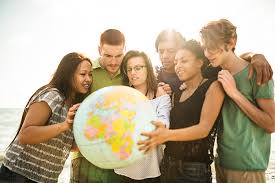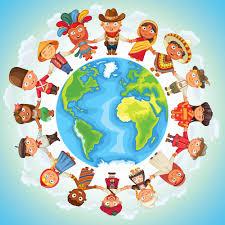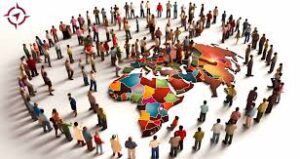Culture vs. Religion: Navigating the Intersection of Identity and Belief
In our diverse and interconnected world, the concepts of culture and religion often intersect, intertwining in complex ways that shape individuals and societies. While both culture and religion play pivotal roles in defining who we are and how we interact with the world, they represent different aspects of our collective and personal identities. Understanding the distinction between the two and their interaction can provide valuable insights into how we navigate our own lives and engage with others.
Understanding Culture
Culture encompasses the shared practices, values, norms, and artifacts of a group of people. It is a broad and fluid concept that includes language, art, cuisine, social habits, and traditions. Culture is learned and passed down through generations, often evolving over time as societies adapt to new circumstances and influences. It reflects the collective identity of a community and shapes everyday life.
Key aspects of culture include:
- Traditions and Customs: Rituals and ceremonies that mark significant life events and communal activities.
- Art and Literature: Expressions of creativity and storytelling that reflect cultural values and experiences.
- Social Norms: Accepted behaviors and practices that guide interactions within a community.
- Cuisine: Food practices that are often integral to cultural identity and social gatherings.
Understanding Religion
Religion, on the other hand, is a system of beliefs and practices related to the divine or sacred. It typically involves doctrines or teachings about the nature of existence, the purpose of life, and the afterlife. Religions often provide a moral framework and community for worship and spiritual growth. They can include practices such as prayer, meditation, and rituals, as well as texts or scriptures that guide followers’ beliefs and behaviors.
Key aspects of religion include:
- Beliefs and Doctrine: Fundamental principles and teachings about the divine, the nature of existence, and moral conduct.
- Rituals and Worship: Formal practices and ceremonies dedicated to the divine, including prayer, sacraments, and festivals.
- Community and Fellowship: Groups of people who share similar religious beliefs and engage in communal worship and support.
- Sacred Texts: Writings or scriptures that provide guidance and inspiration for followers.
Intersecting Realms: Culture and Religion
While culture and religion are distinct, they often overlap and influence each other in profound ways. Here’s how their intersection can play out:
- Cultural Expressions of Religion: Religion often shapes cultural practices and norms. For example, Islamic art and architecture are deeply influenced by religious principles, with intricate designs that reflect spiritual beliefs. Similarly, Hindu festivals like Diwali are not just religious events but also significant cultural celebrations involving traditional foods, music, and dance.
- Religion Within Cultural Contexts: Religious practices can be adapted to fit different cultural contexts. For instance, Christianity has various expressions around the world, from the vibrant celebrations in Latin America to the more subdued observances in Western countries. These variations reflect the blending of religious teachings with local cultural practices.
- Culture Shaping Religious Practice: Cultural norms and values can influence how religious practices are expressed and perceived. For example, the communal meals in Judaism, such as the Seder during Passover, often reflect cultural practices related to hospitality and family gatherings.
- Religion as a Cultural Identity Marker: In many societies, religion is a key component of cultural identity. For some, religious practices and beliefs are deeply intertwined with cultural heritage, shaping how they see themselves and how they are seen by others.
Navigating the Tension
The intersection of culture and religion can sometimes lead to tension, especially when cultural practices clash with religious teachings or vice versa. It’s important to approach these situations with sensitivity and an understanding of both cultural and religious contexts.
For example, certain cultural traditions might conflict with religious principles, such as specific dietary restrictions or dress codes. In such cases, dialogue and compromise are essential to find respectful and inclusive solutions that honor both cultural and religious values.
Fostering Respect and Understanding
To navigate the complexities of culture and religion, fostering mutual respect and understanding is key. Here are a few strategies:
- Education: Learn about different cultures and religions to appreciate their nuances and significance. This helps in understanding the context behind practices and beliefs.
- Open Dialogue: Engage in conversations with individuals from diverse backgrounds to gain insights into their experiences and perspectives.
- Empathy: Approach differences with empathy and an open mind, recognizing that both culture and religion contribute to a person’s identity and worldview.
- Respect: Acknowledge and respect the diverse ways in which people express their cultural and religious identities, even when they differ from your own.
Conclusion
Culture and religion are both integral to our identities, shaping our values, practices, and interactions with others. By understanding the distinct roles they play and how they intersect, we can foster greater respect and appreciation for the rich tapestry of human experience. Embracing this complexity allows us to build more inclusive and harmonious communities, where both cultural and religious diversity are celebrated and valued.
Building Inclusive Communities
As we delve deeper into the interplay between culture and religion, it’s important to consider how we can build more inclusive communities that honor both. Inclusivity requires recognizing and valuing the diversity of cultural and religious expressions while promoting dialogue and understanding.
**1. Create Safe Spaces for Dialogue: Establishing forums for open discussion can help bridge gaps between different cultural and religious groups. Community centers, interfaith dialogues, and cultural exchange programs provide platforms where individuals can share their experiences, ask questions, and learn from one another. These conversations can dispel myths and foster mutual respect.
**2. Promote Cultural and Religious Literacy: Education plays a crucial role in breaking down stereotypes and fostering understanding. Schools, workplaces, and community organizations can offer programs and workshops that educate people about different cultures and religions. Understanding the historical and social contexts of various practices can help prevent misunderstandings and promote appreciation.
**3. Encourage Representation: Ensuring diverse cultural and religious representation in media, politics, and public life can help challenge stereotypes and provide role models for underrepresented groups. Representation matters because it validates the experiences of different communities and helps to create a more balanced and inclusive society.
**4. Support Intercultural and Interfaith Initiatives: Encouraging collaborative projects that bring together people from different cultural and religious backgrounds can lead to positive outcomes. Whether through joint community service projects, cultural festivals, or interfaith dialogues, these initiatives can build bridges and foster a sense of shared purpose.
**5. Respect Personal Boundaries and Preferences: While it’s important to be open and curious about other cultures and religions, it’s equally important to respect individual boundaries. Not everyone may wish to share details about their beliefs or cultural practices. Respecting personal choices and privacy fosters trust and mutual respect.
**6. Address and Challenge Discrimination: Discrimination based on culture or religion can hinder social cohesion and create divisions. Addressing and challenging such biases through education, advocacy, and policy changes is essential for building equitable communities. Organizations and individuals should work to create environments where everyone feels valued and included.
**7. Celebrate Diversity: Actively celebrating cultural and religious diversity through events, festivals, and educational activities can enhance community engagement and appreciation. These celebrations not only acknowledge the richness of different traditions but also promote a sense of belonging and unity.
The Role of Personal Reflection
Understanding the dynamic relationship between culture and religion also involves personal reflection. Individuals can examine how their own cultural and religious backgrounds influence their perceptions and interactions. By recognizing their biases and assumptions, people can engage more thoughtfully and empathetically with others.
**1. Self-Awareness: Reflecting on your own cultural and religious identity can help you understand how it shapes your worldview and interactions. This self-awareness can foster greater empathy and openness towards others.
**2. Continuous Learning: Cultivating a habit of continuous learning about different cultures and religions can enhance your understanding and appreciation. Reading, traveling, and engaging with diverse communities are ways to expand your knowledge and perspective.
**3. Practice Mindfulness: Mindfulness can help you navigate interactions with awareness and respect. By being present and attentive to others’ experiences and viewpoints, you can engage in more meaningful and respectful exchanges.
Conclusion
Culture and religion are deeply intertwined aspects of human experience, each shaping and enriching our lives in unique ways. By exploring their intersections and fostering a climate of mutual respect and understanding, we can build communities that honor and celebrate diversity. Embracing both culture and religion with sensitivity and openness allows us to appreciate the complexity of human identity and contribute to a more inclusive and harmonious world.
Ultimately, recognizing the rich tapestry of culture and religion in our lives and communities enhances our collective well-being and strengthens the bonds that unite us. In celebrating and respecting these diverse expressions, we pave the way for a more connected and empathetic global society.
